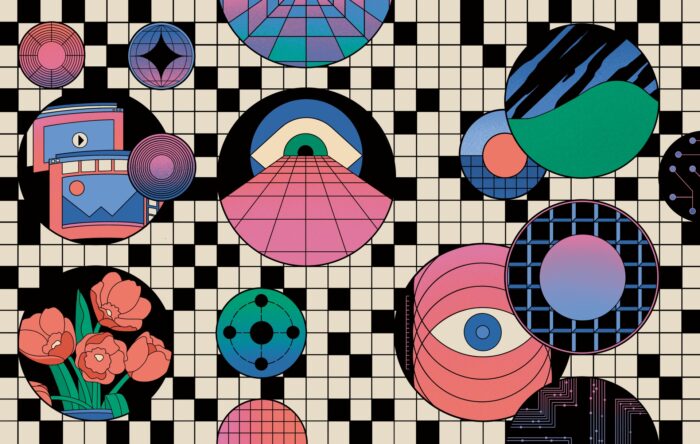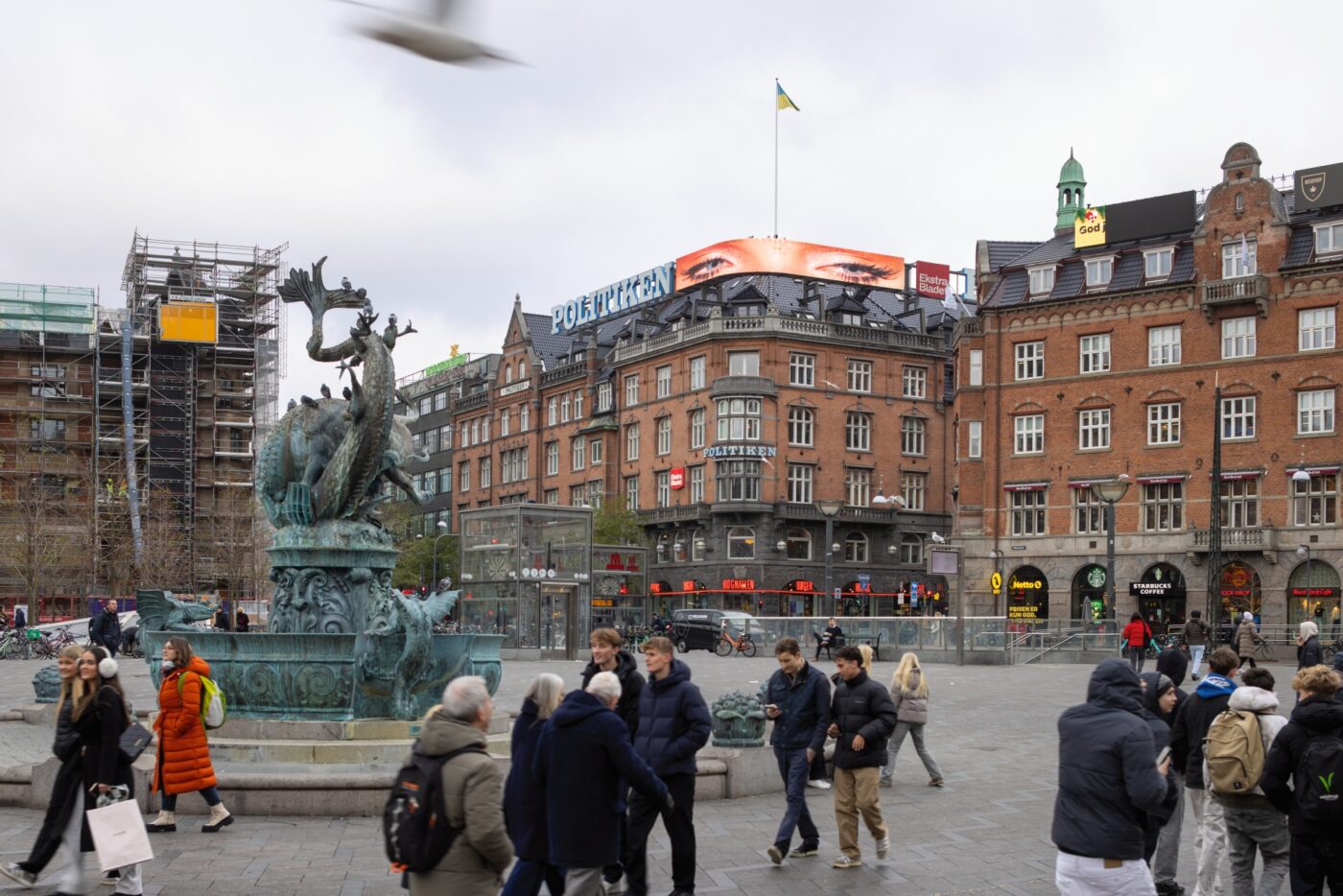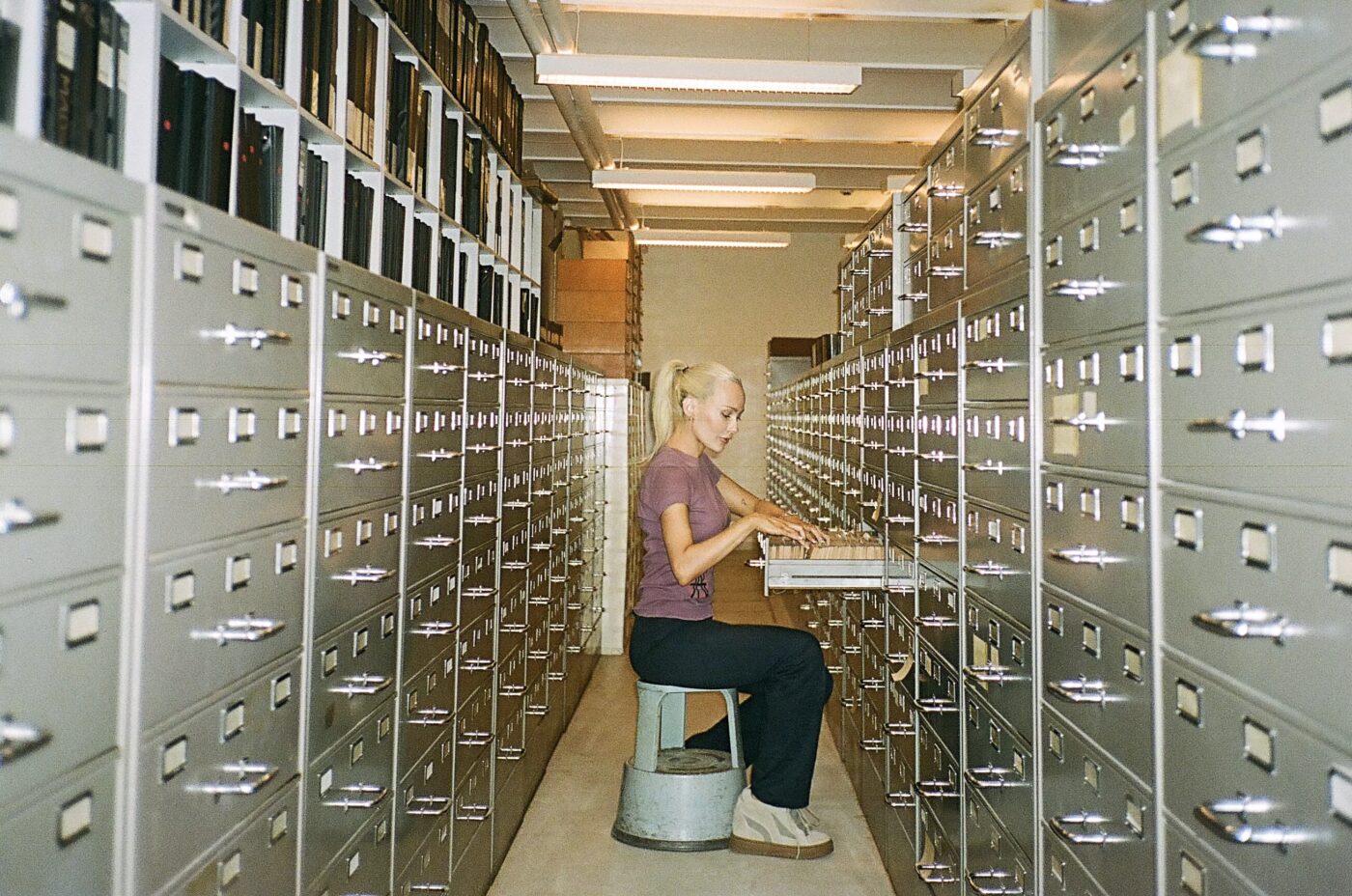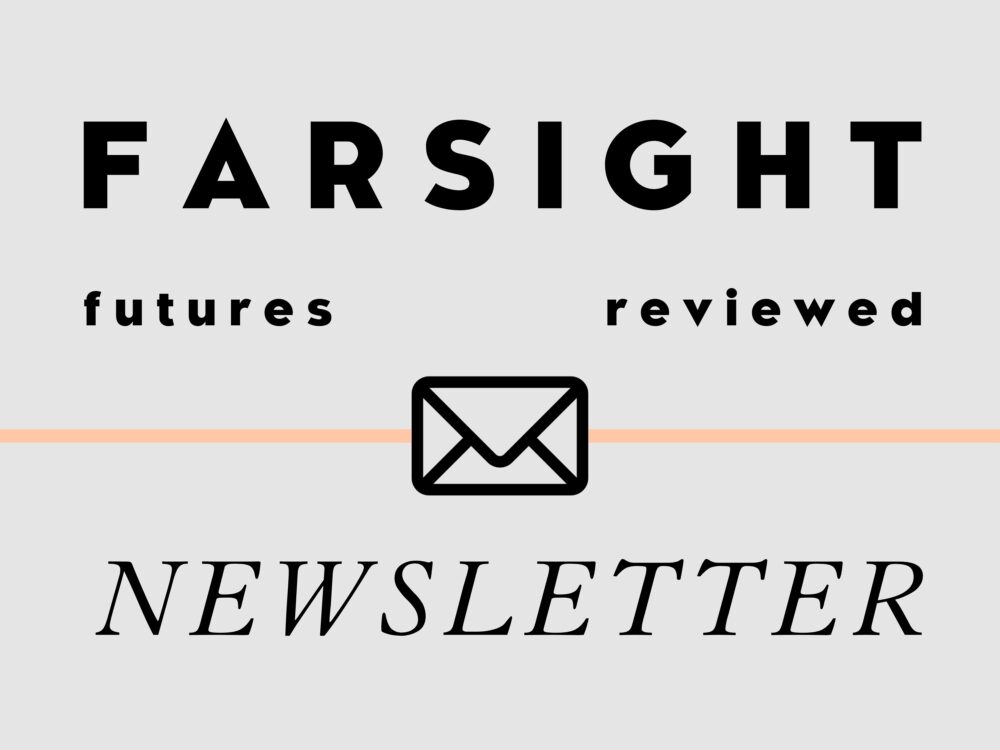
In turn, we use cookies to measure and obtain statistical data about the navigation of the users. You can configure and accept the use of the cookies, and modify your consent options, at any time.

Deep beneath Denmark’s largest media house, a haunted archive of erotic photographs featuring underage women raises uncomfortable questions about media history, ethics, and power. We visit Maja Malou Lyse, an artist who unpacks the controversy surrounding the Danish tabloid Ekstra Bladet’s ‘Page-9-Girl’.
Photographs: Sille-Lee & Ida Schyum
There’s something eerie in the basement. Deep below House of JP/Politiken, a building by Copenhagen’s town hall square housing Denmark’s largest private publishing media house, lies a haunted archive.
At least if you ask Maja Malou Lyse. The 31-year-old Danish artist is renowned for an artistic practice in which feminist theory, sexual education, graphic material, and renditions of mass media are intertwined. Porn and desire. Bodies, images, sex. She is not afraid to grapple with diffuse boundaries. Rather, she is interested in exposing and examining them.
Her latest art exhibition, ’Bombshell, Boom!’, latches onto a Danish media controversy – one that lingers in the archive in the basement of the media groupbuilding of JP/Politiken. Inside the archive are rows of grey filing cabinets containing thousands of negatives of erotic images.

Broaden your horizons with a Futures Membership. Stay updated on key trends and developments through receiving quarterly issues of FARSIGHT, live Futures Seminars with futurists, training, and discounts on our courses.
become a futures memberEvery day since 1976, the Danish tabloid Ekstra Bladet, part of JP/Politiken Media Group, has published an erotic female portrait on Page 9. In the Danish public consciousness, the scantily dressed model is well known as ‘Side 9-pigen’ (The Page 9-Girl). She is at the centre of Maja Malou Lyse’s exhibition.
In recent years, the Page 9-Girl has been subject to heated debate after it was made public that several of the depicted models had been minors when their picture was taken. Was it morally justified to store nude photos of minors in the archive?
Before 2003, the law allowed Page 9-Girls to be as young as 15. Even though the models had given their consent and were paid for their labour, the pictures are still, through the eyes of the present-day, erotic photos of minors. The archive thus posed the question: how does one approach media history that does not match today’s ethical and moral standards?
After facing criticism in 2020 for providing access to erotic material involving minors – and profiting from it, since the photos were behind a paywall – Ekstra Bladet blurred the images of the underage models in their digital archive. Two years later, Ekstra Bladet announced that they would destroy all pictures of minors in the physical archive.
But then the archive began to talk. To object. Some of the minors-now-adults pictured in the photographs did not want to be erased from the tabloid’s history. They wanted to have a say on the future of their photographs.
And so they did. In the end, the photos were not destroyed. Instead they were moved into a cabinet in a separate and locked room in the basement. There’s only one key, and it is tightly held onto by the tabloid’s editor-in-chief, Knud Brix. You can only access the archive if you or someone in your family is pictured in one of its photographs – or if you have a legitimate research interest. As long as access to this part of the archive is restricted, it is legal for Ekstra Bladet to keep the pictures. It’s as if the archive is haunted by the photos of the minors that are present and preserved, yet absent and unavailable.
I meet Maja Malou Lyse on a snowy Thursday afternoon in January, on the ground floor of House of JP/Politiken. In the vestibule, a tiny gallery houses three grey cabinets, similar to the ones found in the building’s basement. They are part of Lyse’s exhibition about the Page 9-Girl and the controversies surrounding her.

A blue bikini peeks out from one of the filing cabinets’ drawers, as if the result of a last-minute outfit change. Other artistic ready-mades include merchandise featuring the Page 9-Girl: a mug, two pens with a smiling brunette in a bikini printed on them, a folding ruler, a bottle opener.
“They truly know their audience,” Lyse says and bursts out laughing. The Page 9-Girl is usually associated with low-brow culture – not the art world.
When Lyse began her work on the exhibition, she spent hours in the physical and digital archive leafing dutifully through its more than 20,000 photographs of women – over 50 years of media history. She flipped through all sorts of pictures. Models wearing bikinis, models smiling, running, posing; a model with enormous silicone breasts, a visibly photoshopped woman with marzipan-like skin, a topless woman holding a puppy, a model posing as a witch sitting on a broom, a model with a bra designed to look like a faucet.
She never saw the photos of the minors. But she did go into the separate room in which these 1649 photos are now stored. “Quite underwhelming to be in there, to be honest,” she recounts with a wink. “It was much more interesting when it was locked up and inaccessible.”
Instead, she was confronted with their spectral leftovers: “What I saw was an emptied archive,” Lyse recollects. “Where their picture had once been, there was now a fake envelope.”
“A fake envelope?”
“Let me show you,” Lyse says, taking her phone out of her handbag. Her manicured nails make a clicking sound as they swipe across the screen and through her virtual photo album. Finally, she finds an example – a photocopy of an envelope with a model’s name and age written on the front. She’s under the age of 18, and therefore the envelope containing her picture has now been removed.
Meticulousness is important to Maja Malou Lyse. Already an award-winning artist, she has sometimes felt like an intruder with defining power over the archive. It’s a power she has wanted to use responsibly.
But this also posed problems: “What can you even say about 20,000 different pictures?”
Lyse wants to showcase who the Page 9-Girl once was and who she is today, which space she inhabits in our cultural imagination, and under what circumstances she is heard – if at all.
“The kind of femininity associated with this type of woman is not something we typically assign value, substance, or importance to,” the artist says.
While developing the exhibition, Maja Malou Lyse saw a contrast in the role of the erotic model in our vernacular: often talked about yet rarely listened to.
“I was in shock. I was convinced that I would be going to the library for books on her history. But there was nothing I could find,” Lyse says. “But as I became more familiar with the models in the archive, I also became aware of the collection’s uniqueness: you can deduce so much from these photos about our view on femininity, erotica, sexuality, bodies, fashion, and how it has changed over time. You also get a very precise mapping of the development of photography techniques and technologies.”

That is the paradox of the Page 9-Girl. She continues to be a part of the popular imagination, but as an important cultural phenomenon, the sexual and feminine figure is largely overridden.
“You can think what you want about the Page 9-Girl, but I maintain that the archive is full of invaluable data that can give us so many clues about these themes,” the artist argues. “So much has changed over the past 50 years! But it doesn’t seem to matter whether its snowing, raining, or the sun is shining, whether it’s #Me- Too or financial crisis. She persists, posing in front of the camera. She is the one constant.”
Despite her admiration for the Page 9-Girl, Lyse’s aim is not to solely to celebrate her legacy. She wants to leave room for ambiguity and friction, acknowledging the Page 9-Girl as both emancipatory and suppressive.
“It’s interesting because it represents both liberation and suppression. It’s because it is neither-nor that it is so meaningful to engage with. What’s more human than such complexity?”
She wanted to shift the conversation around the Page 9-Girl, posing new questions and letting her answers be heard. So, Lyse decided to include a printout of an e-mail that was sent from one of the (previously) underage models to the tabloid’s editorin- chief Knud Brix in which she argued strongly against the destruction of her photographs.
“There was something interesting about incorporating a dilemma from the very same building as the vestibule in which the exhibition takes place.”
The email’s sender, Pia Fris Laneth, had photographs taken of her both topless and lightly dressed in the seventies, when she was a minor. She was among those who did not agree with the archive’s proposed demolition. Laneth let the tabloid’s editor-in-chief know: “I was content with my photographs when they were taken and as such, I still am,” she wrote in the framed e-mail that is displayed at the centre of Lyse’s exhibition.
Pia Fris Laneth was just as naked on the beach as she was on the tabloid’s ninth page, she wrote in the e-mail, which was forwarded to the artist by Knud Brix. It was at least a part of the reason why the photographs ended up in the locked filing cabinet – and not in flames.
“When the pictures were taken, nudity was part of the rebellion against and emancipation from a sexually startled and prudish society in which the body and shame were tightly linked together,” Laneth went on to write.

Explore the world of tomorrow with handpicked articles by signing up to our monthly newsletter.
sign up hereLyse decided to include the e-mail in the exhibition because of the questions it provokes.
“How do we distinguish between what’s right and what’s wrong? How are these conversations taking place, and who gets to partake in them?” Lyse asks. “Maybe there is room to reconsider what should be done with the problematic photographs in the archive. There might be other ways to display them that allow us to reflect on and relate to them as more than prohibited items locked away in a basement.”
Maja Malou Lyse is a prolific and in-demand artist. Prior to ‘Bombshell, Boom!’, she mounted another exhibition rooted in media history – this one examining one of history’s most iconic female portraits: the nude photo of Marilyn Monroe, featured by Hugh Hefner in the inaugural 1953 issue of Playboy. He built his influential sexual empire on a picture he printed without her consent, and without paying her for it. In the exhibition, Lyse documents her trip to Hollywood where she took part in an auction at the late Hugh Hefner’s estate. She acquired Hefner’s signed print of Marilyn Monroe’s portrait, which was hung up in the exhibition, confronting the viewer with the question: who has the right to display the image?
With that exhibition, she posed an open question. With ‘Bombshell, Boom!’, possible answers had already been formulated.
As a part of her research process, Maja Malou Lyse looked through edition after edition of the newspaper on her computer. She went through every Page 9-Girl ever printed, spanning more than 50 years.
“Wasn’t your laptop about to break down?”
“More like my brain!” The artist says and puts up a big laugh. “To my luck, she is on Page 9, not on Page 50…”
The more time the artist spent looking at the photographs – the ones featuring minors having been blurred out by Ekstra Bladet – the more they appeared to her as posing ghosts. Some of these digitally censored spectres were featured in the exhibition as well, framed in aluminium plates and hung on the gallery walls.
This was the artist’s way of making us stay with the unease of the photographs. “I don’t think there’s much use in hiding or erasing everything about the past that we are shameful about. I think it is important to represent this part of our media history as something we dare to spend time with, reflecting on what has changed and why. With the exhibition, I wanted to give an example of how we may be able to access the censored archive – maintaining it while being unable to access it.”
The Page 9 posters in the exhibition reveal another important facet of the Page 9-Girl. She is good for business. Forget cultural significance – profit is likely the main reason for her staying power. Side-by-side with the posing ghosts are commercials. For glasses and cameras and all kinds of other products.
“To me, this reveals what the Page 9-Girl is subject to. She is obviously a commodity, something that has nothing to do with a feminist agenda. But I also know that it’s not just Ekstra Bladet exploiting the model – she is also taking advantage of Ekstra Bladet as a platform.”
That’s also what Maja Malou Lyse has done herself. On the day of the exhibition’s opening, on December 12th, 2024, one could find Lyse posing in a bikini on Page 9 of Ekstra Bladet.
“Why did you decide to have your photograph taken?”
“I had to seize the chance to become a part of this magical archive!” she says with a proud smile. “Become a part of Denmark’s biggest girl squad!”
The contents of ‘Bombshell, Boom!’ have been deemed too explicit by Meta. The multinational conglomerate has censored pictures from the exhibition, adding another layer of context for the archive to exist in.
All the while, a woman’s eyes gaze out over Copenhagen’s town hall square. They belong to a Page 9-Girl and are part of the exhibition. From the illuminated news ticker at the very top of the building, a video recording of a former model watches as people move through the city. It is no longer a question of judging her. It is time for her to tell us what she sees.

This article was first published in Issue 13: The Generative Future